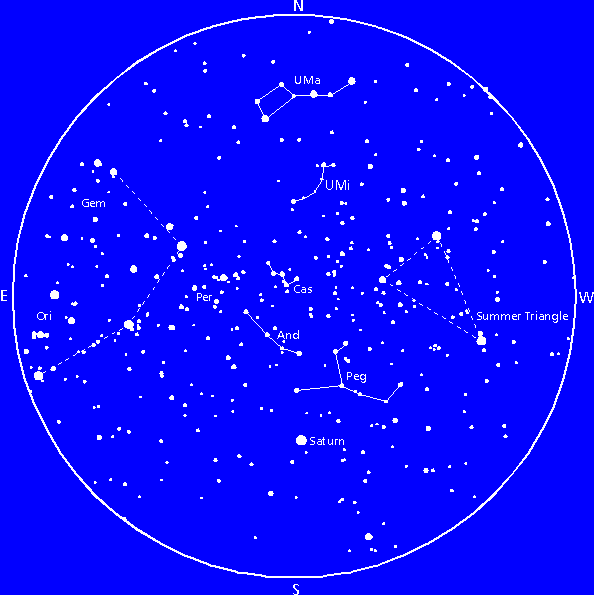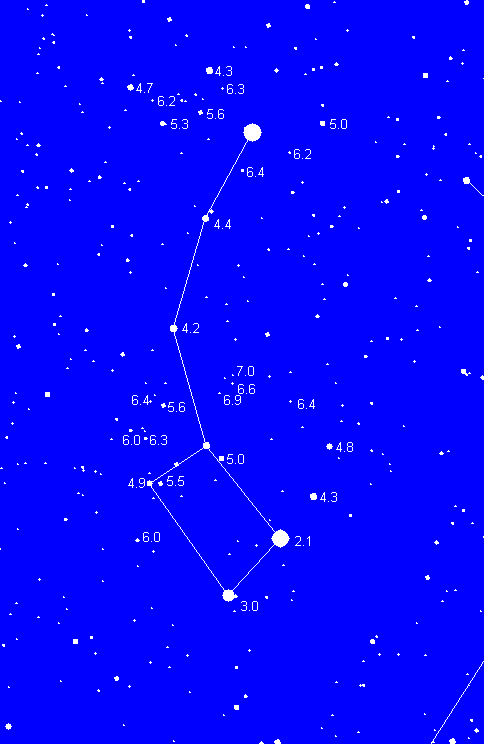Measuring light pollution
Artificial lights are threatening the starry nights.
Too much and wrong lighting illuminates the sky. By this you can see only the brightest stars, fainter stars are invisible in light polluted areas.
More information about this subject you can find on the homepages of:
Some results for this Astronomy-Online project can be found here!
We want try to measure light pollution in Europe!
This can be done by looking for the faintest stars you can see with the naked eye. Stellar brightnesses are measured in magnitudes (mag): the brightest stars are about 0 mag, the faintest to the naked eye about 6 mag (or 5 or even 7) - that's we want to find out!

That's the sky you'll see at mid-November at about 21 hours. You easily identify some constellations like the Great Wagon (UMa - the Great Bear) and Cassiopeia (Cas). Between these you identify the Little Bear (UMi) with the brightest star Polaris. If you would like to take a chart out under the sky, you can print this chart.

Here we have the constellation of the Little Bear enlarged. Numbers besides the stars are their magnitudes. This chart you should print out too and take it under the sky!
Now attention - that's your turn!
- If you go out, remember November nights are already quite cold (in all Europe)- so take warm clothes!
- Take a flashlight, but protect the light with red paper or even a red lamp - that will not disturb the adaption of your eyes to the darkness!
- Stay for at least 15 minutes in the dark to adapt your eyes to the darkness!
- Then take your charts and try to identify the faintest star(s) you can see with the naked eye in the Little Bear.
- Write down all conditions (weather, perhaps artificial lighting that disturbs, ...).
- Back home we would appreciate you to give us the following data by email:
- name:
- address:
- email:
- observing place (if possible geographic coordinates):
- observing date and time:
- observing conditions (weather, disturbing artificial lights):
- faintest star seen
Or:
Fill out form here!
Thank you for your participation!
If you have any comments, suggestions to this project please contact us:
ahaenel@rz.uni-osnabrueck.de
!
Back

